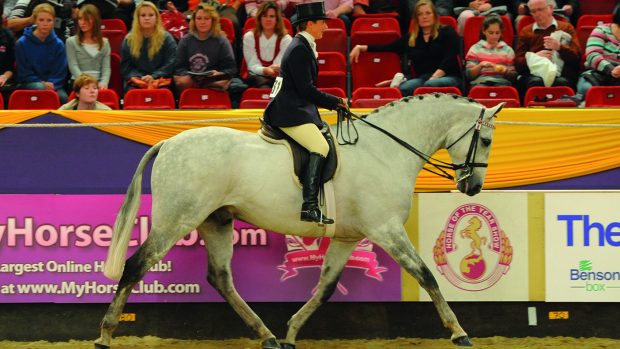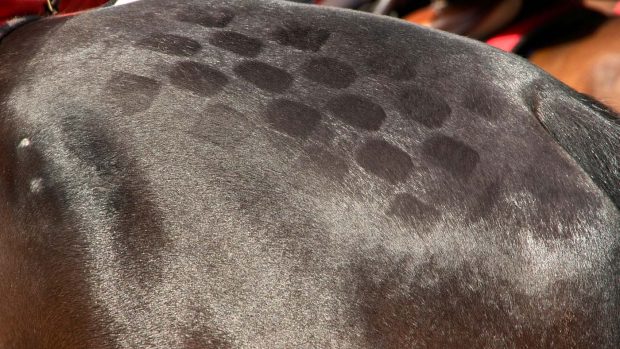A poor gallop is the undoing of many equines in the show ring. If you want to give the judge the right impression, you must get it right. Leading showing producer Jayne Ross is famed for her exhilarating gallops — especially around the enormous main arena at the Royal International Horse Show on two-time supreme champion Time 2 Reflect.
Of course, most rings are not this big, making a correctly executed gallop all the more important. Jayne explains how to get the best from your horse, and shows you what not to do, in the video above.
Smooth acceleration
“You’re not trying to ride a race here, all you’re trying to do is ask the horse to lower and lengthen in a balanced and nice manner,” says Jayne.
“Ride the bend nicely and give yourself and the horse plenty of time. Then all you have to do is ask him forward in a true, onward-going gallop that isn’t too fast, keeping the head in the right place and everything soft and gentle.”
In the video above, Jayne demonstrates how not to accelerate into gallop.
“Lack of forethought and preparation means I haven’t ridden the bend well enough and so the horse jumps out from underneath me, completely unbalanced and sticks his head in the air. The whole thing remains unbalanced, ungainly and unattractive throughout the whole of the gallop.”
Continued below…
Like this? You might also enjoy reading these:
14 things you (probably) didn’t know about showing star Jayne Ross
A soft pull up
“To enable a soft, rhythmic and balanced way of pulling up I sit up in the saddle, drop my weight and lighten my hand to allow the horse to quietly soften and slow down without having to pull him around too much,” explains Jayne.
Of her example in the above video of what not to do, she adds:
“Because the gallop has been unbalanced all the way through, the horse is still fighting for his head [as we pull up]. I have to sit behind him and give him a tug, making the whole thing look ungainly. As a result, the horse’s head goes in the air, he switches legs and it just looks generally uncomfortable.”
Read the full feature in the 5 January issue of Horse & Hound, on sale now.





